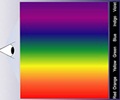
The detailed structure reveals exactly how the dynamin protein can form large assemblies that pinch off bubbles, or vesicles, from cell membranes. These vesicles allow a cell to "eat" proteins, liquids or other items from the outside, compartmentalize them and move them around within itself.
Marijn Ford, a postdoctoral scholar in Nunnari's laboratory, mapped the crystal structure of dynamin-1 in collaboration with Simon Jenni, a research fellow at Harvard University.
Dynamin belongs to a large family of proteins that, in the right conditions, can self-assemble into larger structures and generate force. Those properties of self-assembly and movement can be harnessed in the cell for different functions.
Dynamin-1 itself is involved in making vesicles in nerve cells at the points where nerves form connections, or synapses, with each other. Nerve cells communicate through chemical messengers (neurotransmitters) that are released from and taken up by vesicles. Altering the balance of these messengers can affect mental function. For example, an important class of antidepressant drugs works by affecting the uptake of the neurotransmitter serotonin.
The new crystal structure shows exactly how the individual dynamin proteins can line up to form a helix, and then move by ratcheting alongside each other.
Advertisement
Understanding these miniature motors also might make it possible one day to engineer cells that can do new and different tasks, Nunnari said.
Advertisement
Source-Eurekalert











